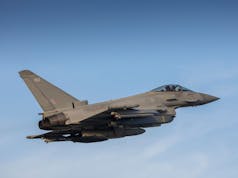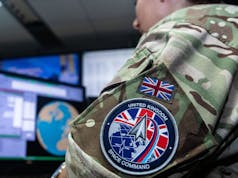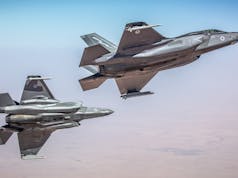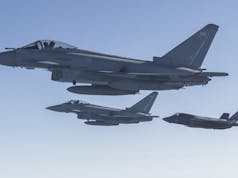The Soviet made Mikoyan-Gurevich MiG-21 fast attack jet and ground bomber has been highly exported.
Its design characteristics, its simplicity, and ability to fly at high speed has made it one of the greatest aircraft the world has ever seen.
The question then becomes? Why has a 20th century of the Cold War remained such a potent and reliable fighter/bomber until the early years of the 21st century and predicted to last much longer.
The performance of the MiG-21 first seen widespread military action against the F4 Phantom of the USAF during the Vietnamese air force, and the Vietnamese was able to have a fighter jet comparable to the technology at the time. Its speed and maneuvering capabilities made it a very formidable foe for the United States Air Force in air to air combat.
More recently we have witnessed the use of the MiG-21 by the Syrian government Air Force to fight rebel targets and to also destroy ISIS on the ground in the Syrian Civil War of the second decade of the 21st century.
The Chinese also developed their own version of the MiG-21, the Chinese made J7s. However, the Chinese no longer use this as their front line weapon, and have decided it would best be used in defence and training duties. Furthermore India is retiring its MiG- 21 too.
However, while this news may make you think that the time of the MiG-21/J7 is over, it could not be further from the truth. North Korean People’s Air Force uses the MiG-21 as an attack fighter, and Bangladesh has acquired the last dozen J-7s in 2013. So this means that their defence means are being met and will not be looking for a replacement.
Historically, one must look to the technological aerospace race between the United States and the Soviet Union during the height of the Cold War to see the development of the technological origins of this aircraft. While the United States was developing fighter aircraft which were faster and more technologically advanced at the time, the MiG-15s was not simply up to the task. The Soviet Union intended to meet the United States head on, while also simultaneously attempting to provide air superiority. Its first flight was in 1956, but it became fully operational in 1959, changing the air balance of power in the Cold War between the Soviet Union and the United States, with consequences that went far beyond the conflict and go on to serve in numerous campaigns and wars of the 20th and also early 21st century. Its more than just a Cold War relic, but an icon of 20th century aircraft design and engineering.
The MiG–21 became known by NATO as the callname “Fishbed, and this aircraft was fast. It could exceed the speed of sound making it a supersonic aircraft and could reach Mach 2.0. It also had an internal cannon, plus the ability to carry between two and six missiles. However, this does not mean that the Mig-21 “Fishbed” would only serve as an air attack/defence role. On the contrary, its hybridity in design meant that it could also serve as a strategic bomber in a ground attack role by carrying rockets and bombs. This would also be based on the assumption that during a military confrontation between the Soviet Union and its allies in the Warsaw Pact with the United States and its main NATO allies, there would be massive ground warfare across central Europe, particularly in Germany. However, such a major engagement between the Soviet Union and its Warsaw Pact allies against the United States and its allies in Central and Western Europe never happened during the Cold War which ended in 1991.
Furthermore, an interesting fact to point out is that the preferred Soviet command and control of air assets from the ground meant the aircraft did not need more room for radars. This helped it keep the weight down and also allow it to be manoeuvrable.
The Soviet Union would later go on to produce this aircraft between the years 1959 and 1985 and according to the National Interest (2017) article ‘Russia’s MiG-21: The Fighter Jet That Could Fly for 100 years?’ the Soviet Union would build 10,645.
Another interesting factor comes into play, the Chinese decided to reverse engineer the MiG–21, and acquired all the technical data and blueprints in order to produce their own version called the Chengdu J-7 otherwise known as the F-7. Statistically the Chinese produced around 2,400 F-7s (MiG-21 variant) between 1966 and 2013.
During the Cold War, the Warsaw Pact ally Czechoslovakia built 194 which was under license from the Soviet Union. India (an ally of the Soviets but not officially apart of the Warsaw Pact) shared defence technology with the Soviet Union, and as a result of a defence agreement with the Soviet leadership, it would construct 657. Romania – a Communist country in 1962 the Romania Air Force received first 12 MiG-21F-13 followed by another 12 of the same variant in 1963. Deliveries over several years continued, with the Romanian Air Force having a total number of 322 aircraft. In Bulgaria, a Warsaw Pact Country, it received a total of 224 MiG 21 aircraft. In addition, Yugoslavia also a Communist Federal Republic but not militarily aligned with the Warsaw Pact it purchased 261 MiG-21s in ten different variants. Some of which were later used during the Yugoslav Wars. In addition, MiG-21 deliveries to Libya started in 1975 of 25 MiG-21 trainers, followed by 50 MiG 21MFs. However, 30 MiGs were later transferred to Syria in 1982. From 1980, 94 MiG-21bis were delivered. Interestingly enough. 33 MiG-21s were still in operation according to an Israeli intelligence report. For more information see Yefim Gordon“MiG-21”.
As quoted in the National Interest (2007):
“The combined numbers make the Fishbed [MiG – 21] by far the most produced supersonic aircraft in the world”.
I would actually argue that the MiG-21 always had the potential of being a ‘third generation’ ship such as a renewed emphasis on ground-attack capabilities being one aspect that the design would allow. In addition during the Vietnam War, The North Vietnamese Air Force used MiG-21s to shoot down other USAF aircraft using missiles, while also using analog avionics
The following sections of this article is split up in a number of sections, with the conflicts served, the countries which purchased the MiG-21, and also the current operators of the Mig-21 in their respective air fleets.
The Vietnam War has an impressive history of combat between the F4, and the MiG 21. While it is not the intention of the article to provide whether one or the other aircraft was more superior (this is a debate in itself), it is arguably the case that the MiG-21 was a formidable foe for the US Air Force, and the US Navy to contend with, and also created flying Aces in the Vietnam People’s Air Force.
During the Indian-Pakistan war, as a hallmark of the developed military partnership between the Soviet Union and Indian, which enabled India to have an effective conventional air deterrence against the perceived threats of the Chinese, and its neighbor Pakistan (which it had a long history of conflict since Independence of India and patrician. The MiG-21 had an impressive record during this air conflict and claimed a number of Western and Chinese originated aircraft including the shooting down of 4 F104s, 2 Shenyang F6, a North American F 86 Sabre, and a Lockheed C130 Hercules.
Ed Coggins, (2000) wrote a book called ‘Wings that Stay’ and concluded that due to the performance of the MiG–21 meant that it clearly had “won” the air combat between the MiG-21 and the F-104.
It is also worth noting the number of conflicts this fighter has been involved in. It was used extensively in the 1960s, 1970s and 1980s by the Air Forces of Egypt, Syria, and also Iraq in their respective conflicts. During the Iran – Iraq War, 21 Iraqi MiG-21s were shot down by Iranian F14s, and 29 MiG-21 shoot down by F-4s. However, during the period of 1980 – 1988, Iraq shoot down 43 Iranian fighter jets, against the losses of 49 MiG-21s. You could argue that by the time of this conflict the performance abilities of the MiG 21 started to show a decline against more advanced aircraft.
The MiG-21 has been involved in conflicts in the Horn of Africa between the Ethiopians and the Somalians during the 1977-78 Ogaden War. In addition, during Angola’s long running Civil War, the MiG-21s of the Cuban Airforce was used to engage ground targets of the rebel ground forces. In the Congo, the MiG 21s as well as its Chinese copy F-7 flew ground sorties in the First and Second Congo Wars. During the 1991- 1995 Yugoslav wars, the Yugoslav People’s Army used MiG-21 in a ground attack role. In the NATO bombing of Yugoslavia, 3 MiG 21’s were destroyed. While during operation Desert Storm in 1991, the USAF engaged with the Iraqi Air Force MiG-21s.
Recently the MiG-21 has seen service during the Syrian Civil War and has functioned in a ground attack role. Also with tensions running high in the Korean Peninsula, I would imagine there is heightened activity with the North Korean air force arsenal of MiG-21 training for the increasingly possibility of a military confrontation.
One of the more interesting facts about the North Korean Air Force, is that it has women who fly these aircraft, and they are sponsored by the Communist regime itself. So it’s both symbolic of national pride and also seen as a status symbol for elite fighter pilots.
Although there has been a considerable number of countries who use to operate MiG-21s, there is still there is a considerable list of countries that still operate this aircraft. The current operators include Croatia, Cuba, Egypt, India, Libya, Mali, Mozambique, North Korea, Romania, Serbia, Syria, Uganda, and Zambia. Former operators included the following, Afghanistan Algeria, Angola, the Soviet Union and its ex Soviet Republics including (Russia, Georgia, Azerbaijan, Turkmenistan, and Ukraine) , Bangladesh, Belarus, Bulgaria, Cambodia, Chad, China (through its own version the J-7), the Republic of the Congo, and the Democratic Republic of the Congo, East Germany which then unified with Germany to make Germany the operator of the MiG-21, Eritrea, Ethiopia, Finland, Guinea, Hungary and Czechoslovakia, Poland (all of which use to part of Warsaw Pact led by the Soviet Union), Indonesia, Iran, Iraq, Israel, Laos, Madagascar, Mongolia, Namibia, Nigeria, interestingly enough the United States (for training and civil purposes), Vietnam, North and South Yemen, Yemen, the Yugoslavia (the Socialist Federal Republic) and then its successor state the Federal Republic of Yugoslavia.
The list of current operators include Croatia, Cuba, Egypt, India (which is due to sell its MiG 21s), Libya, Mali (a French ally in its current operations against Islamic Extremist terrorists). Mozambique, North Korea (according to the 2016 edition of the World Air Forces 26 MiG-21s are still in service, Romania, (however by December 2016, the Romanians are going to phase these aircraft out in favour of the United States’ F-16 Fighting Falcons, Serbia still has these aircraft but only 3 MiG-21s are operational, and all MiG 21s have been grounded. The MiG 21s that are operational are armed with air – to – air missiles. Syria, is one of the biggest operator of MiG-21s with 200 in total from 2007. However, with the conflict in this country, it is hard to know the exact number of MiG-21s in operation, but the MiG-21 still remains operational with the Syrian Air Force (of Assad’s regime). This may be worthy of another article. Uganda still has a combat unit of 7 MiG 21s. Lastly Zambia have a total of 10 MiG 21s in service.
While some countries have adopted the MiG 21 as an operational fighter, it continues to play a ground war capability in the Syrian Civil War. An interesting point to note, that modern fighters of a later generation still do not fly much faster than the old MiG-21, and they do not have a considerable advantage in maneuverability according to the National Interest (2017). While in Western standards, it does not possess the electronic warfare equipment or considerable ordinances of say a Western jet, during the Vietnam, the Indo-Pakistan War, and the Iran-Iraq War it provided a formidable platform to take on jets on air, and also attack ground positions. However, with more technologically advanced aircraft, we may start to see an asymmetry in aircraft capabilities.
However, given the fact that time has moved on in technology and air and ground attack abilities the MiG-21’s economic cost, utility and ability to act both as a fighter and also as a bomber leads to third world states, and others who have inherited the MiG-21 to keep it in operation. For most developing countries, they may not simply want the most technological advanced aircraft, but one which simply works. The MiG-21 fits the bill.
In my own opinion is that it the Chinese version J-7 has brought greater longevity to the overall design of the MiG-21 and its extensive operational history means it was a formidable fighter. I would also conclude that the MiG-21 could be tailored to fit a more ‘ground attack aircraft’ function – given its capabilities to drop munitions on ground targets such as the case in the Syrian Civil War. While its numbers are in decline it still sees operation. It has stood the test of history as one of the world’s iconic aircraft and has earned the respect of both friend and foe.













“an ally of the Soviets but not officially a part of the Warsaw Pact”
It wasn’t even unofficially part of it
India was in all but name. It would be interesting to know what plans NATO had for dealing with India, Vietnam etc in the event of war.
I can’t agree – I doubt Indian troops were included in the order of battle. Nor did they organize and equip on Soviet lines as required of all Pact members. India bought equipment from all over the world and considered itself as the leader of non-aligned nations.
Look at it this way, with the right hack and right tweak, you can virtually keep the MIG-21 going forever. You can virtually turn the MIG-21 into a Point defense fighter with the Right Upgrades and right Weapons. It could virtually be a perfect Point defense fighter
A jet powered AK47 🙂
It was the success of the MiG 21 and earlier MiG fighters in the Vietnam War against the heavier US aircraft that led to development of the F-16, F-15 and F/A-18 to counter the threat. If anyone is interested, I would recommend ‘One Day in a Long War’ by Jeffrey Ethell, which contains some interesting accounts by US pilots flying F-4s and other aircraft in air combat against MiGs during Operation Linebacker in 1972.
Ha. I have that book in my library. Never read it!
It’s a cracking read. It focuses on a single day, 10th May 1972, and follows the raids by US aircraft against North Vietnamese targets around Hanoi, Haiphong and elsewhere. Some really good accounts of air-air combat and air-ground strikes including the attack on the Paul Doumer bridge which the Americans had been trying to hit with iron bombs for years, only this time they have early smart weapons.
‘F-16, F-15 and F/A-18’
Because of the efforts of the ‘fighter mafia’.
https://en.wikipedia.org/wiki/Fighter_Mafia
Egyptian Mig21s, even when piloted by Soviet pilots, performed poorly against Israeli aircraft.
Operation Rimon 20, IDF shot down 7 Mig21s in a matter of minutes for no losses. The Migs were being flown by the Soviet Union’s best pilots.
Correction 5 Mig21s lost not 7
Hi Mike, yes – an epic high-altitude combat by all accounts. Like you, I believe the Soviets lost five aircraft. Although, I still think the Mig21 was a better aircraft than its combat record might suggest.
Unfortunately, for the Russian fighter, there often appears to have been a disparity in the tactical acumen between the men in the respective cockpits, even Soviet ones.
The combat you refer to was during the War of Attrition, 1969-1970, over Sinai. The Soviet Union deployed air-defence units to bolster their hard-pressed Egyptian allies. In response to an Israeli A-4 Skyhawk being pursued and damaged by Soviet Migs, the IAF planned an ambush with Phantom and Mirage fighters, crewed by several fast-jet aces. I think three Soviet pilots were killed during the dogfight.
Arguably, the most proficient operator of the Mig21 was the Indian air-force. I remember reading how their initial batch of pilots were appalled at the rigid Soviet training and tactics which limited the man in the cockpit to following instructions from the ground controller.
Pakistani pilots flying with Arab air-forces gave their Israeli counterparts some problems; I suspect Indian piloted Mig21s would have been a match for many western style air-forces.
There was a TV interview ( maybe BBC panorama) with israeli pilots after the six day war and they said if the Israelis had mig21 and the Arabs mirage 3, Israel would have still achieved air superioty and won.
Never underestimate the human factor in war.
Operation Bolo worth reading as well.
USAF phantoms shot down 7 North Vietnamese Mig21s for no losses in a single engagement.
Bolo was certainly a victory for the US, but I think that overall the performance in air-air combat was worrying the US prior to Johnson halting the raids against the North. I can’t remember where I read it but the losses in air-air combat were falling below 2:1 at times, and every US aircraft loss meant potentially another guest at the Hanoi Hilton–a great propaganda coup for the NV. Also, the RoE for US planes meant that often their advantage in using BVR AAMs like Sparrow was negated. Generally, air-air combat in the war took place within visual range, where the weapon was severely hampered in dogfight situations.
USAF tactics and aircraft initially deployed where woeful in Vietnam.
But they learnt the hard way.
I saw one of these at an Airshow (Ground exhibit) couldn’t believe how small it actually is.
But what the article doesn’t mention is that the Chinese J-20 (as in use with Pakistan) which is touted as a modern jet fighter is actually the F-7 in new clothing.
Do a google on:
This Is the Ultimate MiG-21
for more information.
Sorry that should be J-17
The Mig 21 was like the T55. You can either look at it as the cheapest supersonic jet in the world or as the most expensive coffin in the world.
Was MiG-21 more expensive or dangerous for it’s pilot than F-104 StarCoffin?
[…] More MIG-21 information here. […]
I just wanna say this, indonesia bought a lot of aircrafts from soviet during the 50s and 60s. We bought many variant of MiG including Mig-21 fishbed. Not just mig we also bought Tuvolep bomber and other air force support…
Now those soviet-era engines are kept in the indonesian Dirgantara Museum.